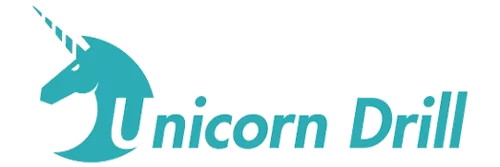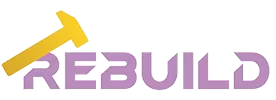Understanding the Role of Drill Tremie Pipe in Oil and Gas Operations
Release time:
2025-11-06
Author:
Source:
Abstract
Drill Tremie Pipe is an essential component in the drilling process, particularly in the oil and gas sector. It serves a critical role in ensuring the effective placement of cement and other materials during drilling operations. The design and functionality of the Drill Tremie Pipe are specifically tailored to allow for the efficient delivery of these materials, particularly in underwater and offs
Drill Tremie Pipe is an essential component in the drilling process, particularly in the oil and gas sector. It serves a critical role in ensuring the effective placement of cement and other materials during drilling operations. The design and functionality of the Drill Tremie Pipe are specifically tailored to allow for the efficient delivery of these materials, particularly in underwater and offshore drilling applications where precise placement is paramount.
One of the primary benefits of using a Drill Tremie Pipe is its ability to facilitate the accurate and controlled placement of cement in wellbores. This is especially important when creating a barrier to prevent fluid migration between different geological formations. The pipe's design allows for a continuous flow of material, minimizing the risk of voids or air pockets that can compromise the integrity of the well.
In addition to cement placement, Drill Tremie Pipe can also be used for other materials, such as grouts and additives, which enhance the overall performance of the drilling operation. The versatility of the Drill Tremie Pipe makes it an invaluable tool for drilling professionals, ensuring that they can adapt to various operational needs without compromising quality or safety.
Operational considerations are crucial when utilizing Drill Tremie Pipe. Proper handling and installation are essential to prevent blockages or failures during operation, which can lead to costly delays and safety hazards. It is important to ensure that the pipe is adequately supported and maintained throughout the drilling process. Regular inspections and adherence to industry standards can help mitigate risks associated with wear and tear.
Moreover, the selection of the appropriate size and configuration of the Drill Tremie Pipe is critical for maximizing efficiency. Engineers and drilling teams must evaluate the specific requirements of each drilling project to determine the best specifications for their needs. Factors such as the depth of the well, the types of materials being used, and environmental conditions all influence the decision-making process.
In conclusion, Drill Tremie Pipe plays an integral role in the success of drilling operations in the oil and gas industry. By understanding its functions, benefits, and operational requirements, professionals can enhance the efficiency and safety of their drilling projects. As the industry continues to evolve, staying informed about the latest techniques and technologies associated with Drill Tremie Pipe will be vital for optimizing drilling performance and achieving operational excellence.
One of the primary benefits of using a Drill Tremie Pipe is its ability to facilitate the accurate and controlled placement of cement in wellbores. This is especially important when creating a barrier to prevent fluid migration between different geological formations. The pipe's design allows for a continuous flow of material, minimizing the risk of voids or air pockets that can compromise the integrity of the well.
In addition to cement placement, Drill Tremie Pipe can also be used for other materials, such as grouts and additives, which enhance the overall performance of the drilling operation. The versatility of the Drill Tremie Pipe makes it an invaluable tool for drilling professionals, ensuring that they can adapt to various operational needs without compromising quality or safety.
Operational considerations are crucial when utilizing Drill Tremie Pipe. Proper handling and installation are essential to prevent blockages or failures during operation, which can lead to costly delays and safety hazards. It is important to ensure that the pipe is adequately supported and maintained throughout the drilling process. Regular inspections and adherence to industry standards can help mitigate risks associated with wear and tear.
Moreover, the selection of the appropriate size and configuration of the Drill Tremie Pipe is critical for maximizing efficiency. Engineers and drilling teams must evaluate the specific requirements of each drilling project to determine the best specifications for their needs. Factors such as the depth of the well, the types of materials being used, and environmental conditions all influence the decision-making process.
In conclusion, Drill Tremie Pipe plays an integral role in the success of drilling operations in the oil and gas industry. By understanding its functions, benefits, and operational requirements, professionals can enhance the efficiency and safety of their drilling projects. As the industry continues to evolve, staying informed about the latest techniques and technologies associated with Drill Tremie Pipe will be vital for optimizing drilling performance and achieving operational excellence.
Recommended Reading
Understanding the Role of Drill Tremie Pipe in Oil and Gas Operations
Drill Tremie Pipe is an essential component in the drilling process, particularly in the oil and gas sector. It serves a critical role in ensuring the effective placement of cement and other materials during drilling operations. The design and functionality of the Drill Tremie Pipe are specifically tailored to allow for the efficient delivery of these materials, particularly in underwater and offs
2025-11-06
Unlocking the Potential of Interlocking Kelly Bars in Oil and Gas Exploration
Unlocking the Potential of Interlocking Kelly Bars in Oil and Gas Exploration
Table of Contents
Introduction to Interlocking Kelly Bars
What are Interlocking Kelly Bars?
The Importance of Interlocking Kelly Bars in Drilling Operations
Advantages of Using Interlocking Kelly Bars
Design and Technology Behind Interlocking Kelly Bars
Applications in Oil and Gas Exploration
2025-11-04
Understanding Continuous Flight Auger Piles: A Key Element in Modern Drilling Technology
Continuous Flight Auger Piles (CFAP) play a crucial role in the field of drilling technology, particularly within the metallurgical, mineral, and energy sectors. This innovative method of pile installation is characterized by its efficiency and versatility, making it a preferred choice for various construction and foundation projects. CFAP involves the use of a continuous flight auger to create de
2025-11-02







